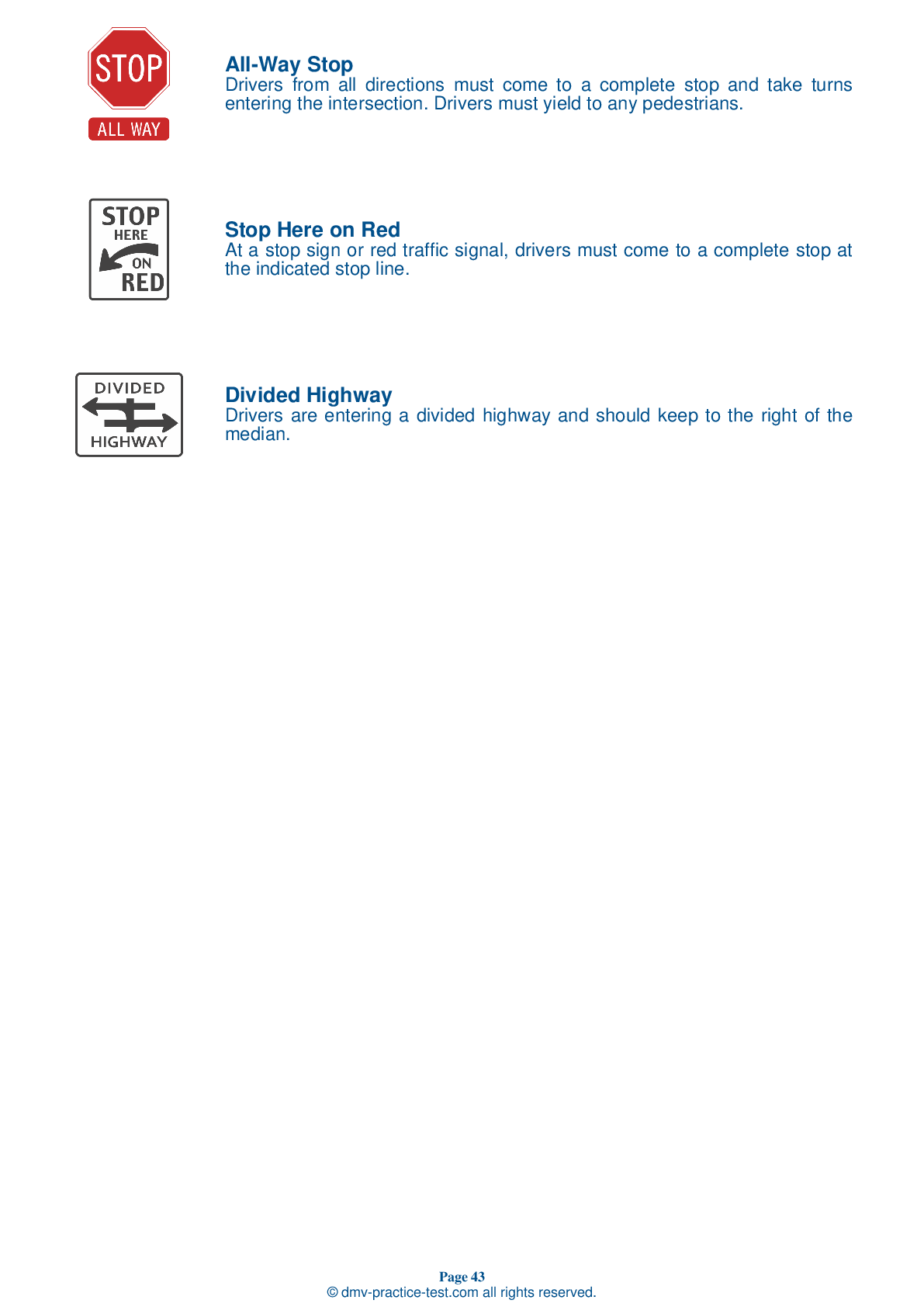FREE Connecticut DMV Practice Test #16 Page 2 of 3
This set of Connecticut DMV practise tests was just updated for January 2025. It includes questions based on the Connecticut Driver Handbook's most essential traffic signs and regulations for 2025. Use actual questions that are very similar (often identical!) to the DMV driving permit test and driver's licence exam to study for the DMV driving permit test and driver's licence exam.
Each practise test question has a hint and explanation to assist you in remembering the concepts. The written component of the official DMV test will include questions about road rules, traffic signs, and driving statutes, as well as information from the Driver Handbook.
To achieve the required passing grade, you must correctly answer 20 of the 25 questions. Take our DMV practise exam to help you prepare for your Connecticut instruction permit or driver's licence.
The DMV exam is available in several languages.
Using any form of testing help will result in an automatic fail, and the DMV may take further action against your driver's licence, so avoid it.
10 . Before returning to your original lane after passing another vehicle, you should:
When passing is permitted, look for both headlights of the passed vehicle in your rearview mirror. Only then may you safely return to your original lane.
11 . Which of the following substances can affect the ability to drive?
A number of drugs can impair your ability to drive, including depressant medications like tranquilizers and sedatives; over-the-counter cough syrups, cold tablets, and allergy medications (which may contain impairing substances like alcohol, codeine, or antihistamines); and illegal drugs.
12 . At an intersection with a yield sign, you:
When approaching a yield sign, drivers must give the right-of-way to traffic already in the lanes that they intend to enter or cross. Drivers should be prepared to stop when approaching a yield sign but may continue without stopping if there is no conflicting traffic.
13 . The conviction of a 16- or 17-year-old driver violating the electronic device law may result in:
By law, drivers under the age of 18 cannot use a cell phone or mobile electronic device while driving, even if it is “hands-free.” If convicted of violating the electronic device law, a 16- or 17-year-old driver may be required to take a drivers' retraining course. After completing operator retraining, an additional moving violation within three years of the completion date will result in a license suspension of at least 30 days.
14 . Which of the following statements about blind spots is true?
Blind spots are areas that a driver cannot see if they look in their mirrors. Large trucks have large blind spots that drivers of other vehicles should avoid.
15 . At dawn or dusk and in rain or snow, it can be hard to see and be seen. A good way to let other drivers know you are there is to turn:
You must use your headlights at any time when conditions prevent you from seeing other vehicles and when it may be difficult for other drivers to see you. Always use your low beam headlights if weather conditions require you to use your windshield wipers.
16 . This sign indicates that the road ahead:

This sign warns of a reverse curve in which the road curves to the right, then to the left.
See the exact questions that will be on the 2025 Connecticut DMV exam.
99.2% of people who use the cheat sheet pass the FIRST TIME
LT gives us an insight on how the cheat sheet provided her with all the study questions she needed before taking her test.
Joe initially studied with the handbook and failed his test, he eventually found us online, studied and pass his test the first time around.




